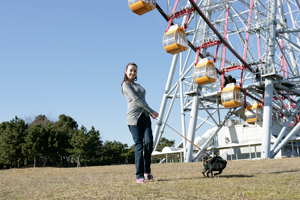Text begins from here.

 |
Generally, any lens that provides a wide view of a scene and has a viewing angle of 60 degrees or more is called a wide-angle lens. One characteristic of these lenses is that they make close objects look very close and far-away objects look even farther away, creating a strong feeling of perspective. Also, their high depth of field makes them especially suited to pan-focus photography where all the elements of a scene are in focus, from near to far. |
One advantage is the extreme feeling of perspective created by making a subject look either closer than it really is or farther away. The other advantage is the pan-focus effect where all of a scene's elements, from foreground to background are brought into sharp focus. |
|||||||||
|
Lenses with a focal length of 20mm or less are called ultra wide-angle lenses. One attraction of these lenses is the feeling of scale created by their extreme perspective. |
|||||||||
|
Lenses with a focal length of 28mm to 35mm are called wide-angle lenses. These lenses provide a good balance of subject and background, and let you take a wide range of photographs, from scenery photos to snapshots. |
|||||||||
|
Stand closer when using a wide-angle lens! |
||
While a 50mm lens gives roughly the same perspective as the human eye, as you can see here a wide-angle lens makes people appear very small. The key to taking wide-angle pictures of people is to stand close to them. This creates the optimal balance of subject and background. |
||
 A 50mm lens image is similar to the human eye. |
  |
 From the same position with a 20mm lens. |






